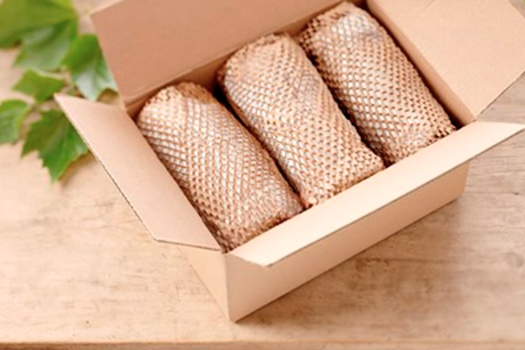When people finally realised quite how much damage humanity was doing to the planet, the conservation movement was born to start putting things right again. While the cuddly stuff - pandas for example - grabs the headlines, there are groups of people out there fighting to preserve everything, from ancient languages to the local village pond. One collection of devotees, however, can boast an arguably more obscure, yet vital, occupation: the conservation of paper.
Ripped pages, tea stains, sun damage, brittleness, flood damage, an extended stay in a heap of manure - most people think that these ailments spell the end for a favourite book, family bible, collectable text or tome of historical significance. But this assumption is not necessarily correct.
"I don't think there has ever been an instance where there has been a book we could not put back together," says Ivor Stone, manager at Chivers-Period Bookbinding, which specialises in paper conservation and book restoration. "Stains, tears, rips, water damage, anything like that - we can always find a way of returning it to a working condition."
Stone has been in the paper conservation trade for more than 40 years and was trained by some of the best in the
business. In 1968, at the relatively inexperienced age of 26, a major flood in Florence handed him the opportunity of working with two masters of paper conservation: Peter Walters and Roger Powell. They had been charged with repairing and restoring, both in Florence and back in England at Walters' workshop near Petersfield, the countless books damaged by the flood. Stone answered the call for help and was trained in how to wash and de-acidify books, as well as repair tears and other damage to pages.
A watery grave?
"These books were covered in mud and sewage and had been floating in the rivers," explains Stone. "The ink was fine, but the paper was ingrained with muck and dirt and the pages were all stuck together."
The remedy for this problem was paper washing - at first glance a suicidal move of drowning the book in a tap water bath, but one that is actually an incredibly effective way of cleaning paper of the various detritus it can attract. Most ink does not run, as it is oil based, so it does not mix with water. If the ink is handwritten, however, it tends to be an iron-gall ink, which has to be tested to make sure it is stable before washing. If it's not stable, the book doesn't get washed.
Stone explains: "Washing is carried out in sinks of heated water. We use our own tapwater, which is slightly alkaline but neutral enough for the purpose, at a temperature of approximately 40C. Each paper leaf is thoroughly immersed in the water until all the pages of the book are on top of one another. During this time, it is not unusual to see the water becoming discoloured as the dirt and grime are washed out. From this tank, the paper is taken out and the excess water gently squeezed away."
But washing does not always shift the most stubborn of stains, which leaves you with a dilemma. To get rid of a particularly bad stain, you would need to bleach the paper, which is something Stone prefers to avoid.
"We would always recommend not to bleach as it reduces the life of the paper," explains Stone. "But you do get customers who says: "Well, how long will it last if you bleach it?'. My reply is that it would be around 50 years. So they do it as they only think of their own personal use."
A paper can also be acidic for a number of reasons: bleaching, exposure to metals such as copper, sulphuric acid from iron-gall inks or sulphur dioxide from the environment. A pH level of less than five can cause damage to the paper and so a de-acidification process is needed.
In order to increase the pH level, the paper is put through another dunking, this time in a tub filled with a solution of magnesium bicarbonate. This will neutralise any acidic compounds left in the paper after washing and leave the paper with an alkaline buffer. Problem solved.
After washing, you are then, of course, left with a lot of damp paper and drying is slightly more complicated than hanging the pages off a washing line. If you leave the sheets in the normal stuffiness of a workroom, mould will soon appear.
Paper can be freeze dried or it can be dried in a controlled lab environment. Chivers-Period takes the latter approach. Its lab is temperature controlled and the air is kept flowing to ensure the atmosphere is not hot and damp. This means the moisture is drawn out of the books.
Recovery period
Ultimately, says Stone, a paper's ability to recover depends heavily on its age. "The thing that surprises most people is that the older the book, the better the paper. This is because older paper was handmade from waste cotton rags. The introduction of mass production papermaking post-1800 caused the quality to come down. This is because they used mostly wood pulp. To whiten it, they bleached it."
"Bleach damages the fibres of the paper and these fibres begin to deteriorate as soon as the paper is created. The alternative wood-free or acid-free options are expensive and the coated papers of today would stick together in water and you would never get them apart. So, oddly, it is the older papers that are more equipped to last."
New or old, all paper can fall victim to rips and tears that come with constant usage. Thankfully, Stone says the problem is usually easily fixable. "Once you have clean paper, you can repair a tear with a starch paste. You simply feather the edges and stick them back together again. If it is a missing piece, you find a compatible paper - something of the same shade and weight - to replace it. For particularly bad tears, or if the paper fibres have deteriorated to the point where
the cellulose fibres have broken down leaving the paper ready to crumble at the touch, adhering tissue paper either side like a sandwich to support the paper makes the document fit to handle."
These repairs are not invisible. You can clearly see where the rip or hole once was. But that is the whole idea of paper conservation: for the most part, you are not trying to make a book look like it's new, you are just trying to make it functional and usable.
"The idea is not to make an invisible repair. We are not trying to hide anything, we are just ensuring the tear gets no worse and that the book is usable once more," explains Stone.
This functionality is the whole reason behind binding books at all, says Stone. "The idea of the binding is to protect the text. The binding is intrinsically valuable, but at the end of the day it is the text that you are trying to protect. So as long as we can create something functional as a book, and not fear it will fall apart, then that is our job done."
Thanks to Stone and his ilk, printed books can boast near immortality, whereas the life of emerging technologies such as e-books are defined by the health of the technology. And at a time where value for money is paramount, this could prove key in the printed word's fight for survival.









